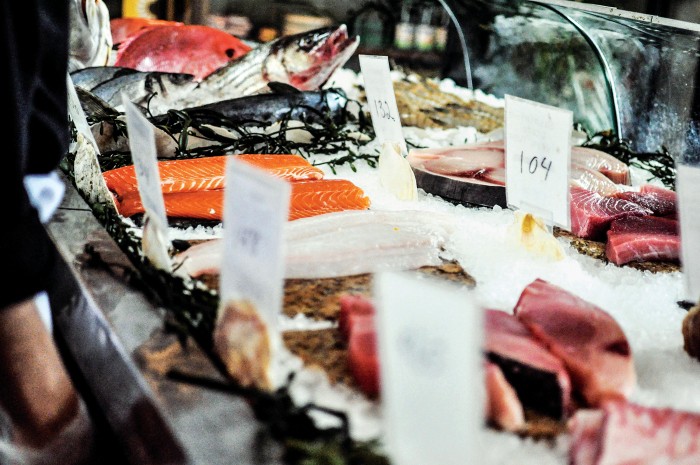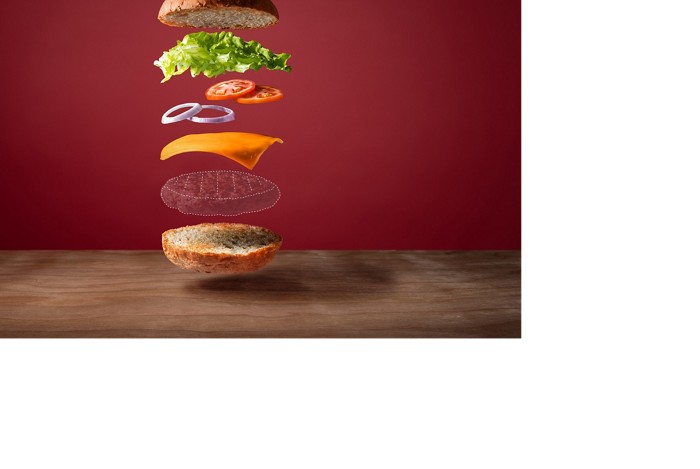Advertisement
Grab your lab coat. Let's get started
Welcome!
Welcome!
Create an account below to get 6 C&EN articles per month, receive newsletters and more - all free.
It seems this is your first time logging in online. Please enter the following information to continue.
As an ACS member you automatically get access to this site. All we need is few more details to create your reading experience.
Not you? Sign in with a different account.
Not you? Sign in with a different account.
ERROR 1
ERROR 1
ERROR 2
ERROR 2
ERROR 2
ERROR 2
ERROR 2
Password and Confirm password must match.
If you have an ACS member number, please enter it here so we can link this account to your membership. (optional)
ERROR 2
ACS values your privacy. By submitting your information, you are gaining access to C&EN and subscribing to our weekly newsletter. We use the information you provide to make your reading experience better, and we will never sell your data to third party members.
Food Ingredients
Seitan
Wheat makes a vegetarian alternative to meat
by Craig Bettenhausen
June 10, 2013
| A version of this story appeared in
Volume 91, Issue 23

Wheat meat, fu, mock duck, and wheat gluten: These are all names for the vegetarian meat substitute commonly called seitan in the U.S. Seitan’s texture can be made so similar to that of chicken that some who shun meat find it disturbing. The popular meat alternative is made from wheat’s main protein component, gluten.
Seitan (pronounced sā-tan) originated in Asia. According to one story, several hundred years ago a Chinese emperor became a Buddhist and stopped eating meat, says Nicole Sopko, vice president of Chicago-based seitan maker Upton’s Naturals. “But he still wanted some of the textures of the foods he had been eating, so seitan was created.”

Whether made at home or by a commercial operation, the basic process for making seitan is the same. A dough of wheat flour, yeast, and water is mixed up, kneaded, and left to rest for a short time. Then the dough is massaged in a large volume of water. Starches and other water-soluble components of the dough leach into the water, leaving behind a glutenous protein mass.
Sometimes flour with most or all of the starches removed is sold in supermarkets as a product called vital wheat gluten. It is primarily used as an additive in baking to improve the texture and elasticity of dough, but it is often used as starting material for homemade seitan.

Online forums for meat-free cooking are full of questions from people looking for tips on how to give homemade seitan a pleasant mouthfeel. But although a frequent goal is to mimic the taste and texture of chicken, many do-it-yourself attempts resemble a loofah bath sponge instead. Sopko declined to discuss the methods used at Upton’s to produce its seitan; the details of the mixing and cooking techniques make the difference in its texture, and texture is the name of the game.
Washington, D.C.-based science communicator and molecular biologist Adam Ruben has dug through the primary literature on gluten and seitan for clues on how to achieve a palatable texture.

He explains that gluten, and therefore seitan, is a suspension of two types of water-insoluble proteins, gliadins and glutenins. Gliadin proteins are relatively small, around 40,000 dalton, whereas glutenins are 10 to 100 times as large, Ruben says. During the mixing process, cysteine residues on the glutenins form disulfide bonds between individual protein units, and this results in a disorganized cross-linked aggregate. The smaller gliadins don’t form similar intermolecular bonds but instead are trapped in the glutenin matrix.
Water retention and tensile strength in seitan are pH dependent, so acids or bases in the mixing or cooking liquids, such as vinegar or baking soda, respectively, provide a way to manipulate the texture (J. Agric. Food Chem. 1993, DOI: 10.1021/jf00035a006).
In addition to the chemistry involved in making seitan, physical manipulation such as stretching it in one direction and compressing it in another during cooking might provide a fibrous structure that mimics meat (Cereal Chem.1991,68, 492).
Lachesis’ Seitan O’ Greatness
This boldly named do-it-yourself seitan recipe is famous in the vegan community. Countless variations appear on a multitude of Internet forums.
Ingredients:
1 1/2 cups vital wheat gluten
1/4 cup nutritional yeast
2 tsp paprika
1/4 tsp cinnamon
1/4 tsp cumin
1–2 tsp pepper
1/4 tsp cayenne pepper
1/8 tsp allspice
2 tsp garlic powder
3/4 cup water
4 tbsp tomato paste
1 tbsp tamari
2 tbsp extra virgin olive oil
2 tbsp vegetarian Worcestershire sauce
Directions:
Preheat oven to 325 °F.
In a large mixing bowl, mix dry ingredients. Mix the rest of the ingredients (liquid ingredients) in a smaller mixing bowl; whisk well until mixed.
Add the liquid ingredients to the dry ingredients. Mix well, then knead for a minute or two … it doesn’t need long.
Form into a log (6–8 inches long); wrap tightly in foil, twisting ends. Bake for 90 minutes. When done baking, unwrap and leave out to cool all the way. Then wrap it in foil or plastic and refrigerate. Slice to use as desired.
—Recipe courtesy of SparkRecipes
But some people avoid gluten as passionately as vegetarians shun meat. Gluten has gotten a bad rap recently as a result of an increase in diagnosed cases of celiac disease and gluten sensitivity. In celiac disease, gliadins trigger an autoimmune response that damages the villi in the small intestine. The fingerlike villi are responsible for nutrient absorption in that portion of the digestive tract, so the disease is often marked by intestinal pain, anemia, and fatigue. Celiac is a genetically linked condition and can be diagnosed with blood tests.
Less is known about gluten sensitivity, although research on the subject is increasing. In gluten sensitivity, individuals experience a range of gastrointestinal symptoms, some of which appear similar to celiac, though gluten-sensitive people do not generally experience damage to their digestive tract.
According to Alessio Fasano, medical director of the Center for Celiac Research & Treatment (CCRT), 4–6% of the U.S. population is affected by gluten sensitivity; celiac disease is less common, affecting one in 133 people in the U.S. (Arch. Intern. Med. 2003, DOI: 10.1001/archinte.163.3.286).
But for the roughly 95% of people whose bodies can process gluten normally, “gluten is a safe and healthy protein source for those without celiac disease or gluten sensitivity,” says Pam Cureton, a CCRT dietician.
She points to a 2012 study on gluten-free diets that says, “There is no evidence to suggest that following a gluten-free diet has any significant benefits in the general population. Indeed, there is some evidence to suggest that a gluten-free diet may adversely affect gut health in those without celiac disease or gluten sensitivity” (J. Acad. Nutr. Diet. 2012, DOI: 10.1016/j.jand.2012.06.009).
For the majority of us who can eat gluten safely, seitan is relatively nutritious. It’s high in protein and low in fat, although some commercially made seitan is high in sodium. “If you’re somebody who feels the need to eat meat all the time, seitan would be a good way to replace some of the red meat in your diet,” Ruben says.





Join the conversation
Contact the reporter
Submit a Letter to the Editor for publication
Engage with us on Twitter